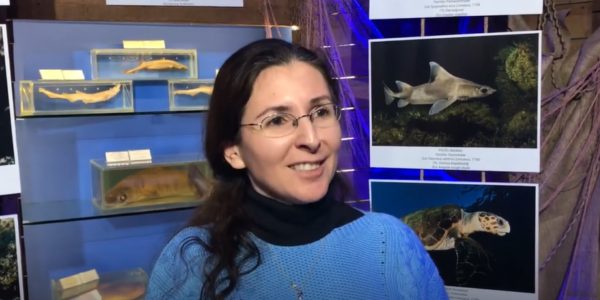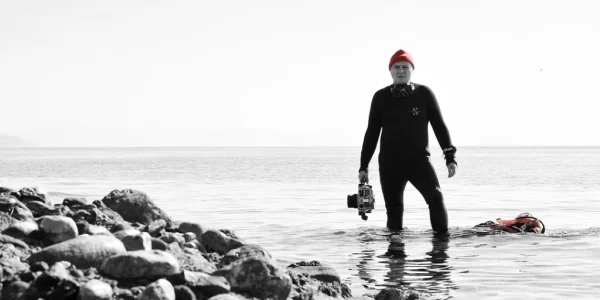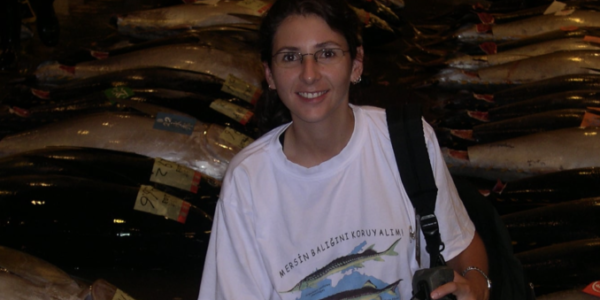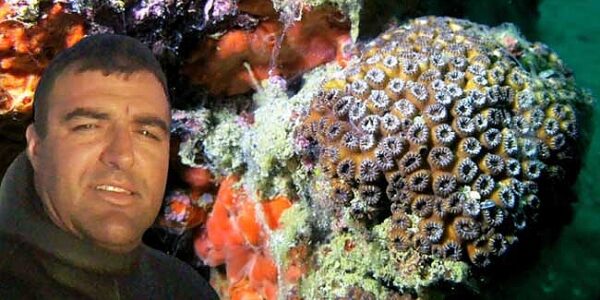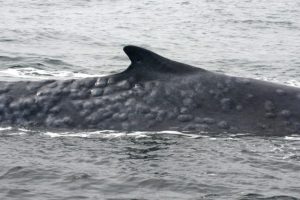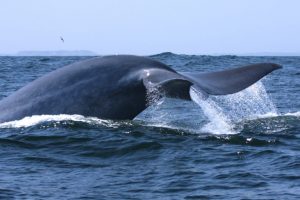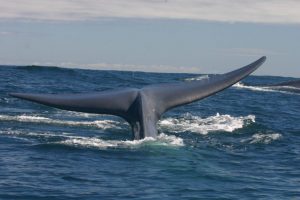Blue whales in Chile have been plagued with serious skin lesions, blister-like sores that can cover their whole bodies.
Following a study that confirmed the presence of persistent organic pollutants in the bodies of blue whales in southern Chile, a second study is underway to determine the cause of the lesions.
Although the results of the second study have yet to be released, scientists believe the lesions could be linked to commercial salmon farming.
In 2007, Chilean researchers presented images of blue whales bearing striking skin lesions at a workshop in South Africa attended by experts in the species from around the world. The attendees were shocked; nothing like this had ever been seen before.
The endangered whales had blisters on their backs, some of them “really very unpleasant,” according to Bárbara Galetti, president of Chile’s Cetacean Conservation Center (CCC) and part of the presenting team. “Some individuals had them all over their bodies, along with strange markings, which were probably the result of a virus,” she said.
The endangered whales had blisters on their backs, some of them “really very unpleasant,” according to Bárbara Galetti, president of Chile’s Cetacean Conservation Center (CCC) and part of the presenting team. “Some individuals had them all over their bodies, along with strange markings, which were probably the result of a virus,” she said.
What’s happening to the whales?
Elsa Cabrera, the CCC’s executive director, is on the bow of a boat photographing whales to help identify them individually later. Behind her is Galetti, who notes down relevant data and records the boat’s route with GPS. Mariano Sironi, the ICB’s scientific director, uses a crossbow to fire a dart at a nearby whale, aiming to capture a 2-centimeter (0.8-inch) skin sample and a 4-cm fat sample. The prick isn’t much for a blue whale, the equivalent of a mosquito bite.
The research team sent fat samples to laboratories to test for pollutants and sent skin samples for pathology testing. Getting hold of the skin samples is the most complicated, Sironi said. “After following the whale for two or three hours, waiting for it to surface, having been focusing solely on the sky and the waves, I have just a few seconds to perform the biopsy,” he said. “And what’s more, we have to make sure that the dart actually takes a sample from a lesion site, and that’s pretty difficult.”
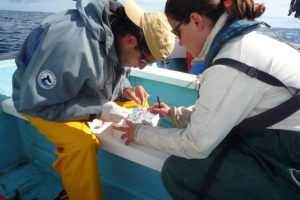
Scientists examine fat and skin samples from blue whales. Image courtesy of the Cetacean Conservation Center.
The skin samples are still undergoing analysis. But an analysis of 40 fat samples confirmed traces of several persistent organic pollutants (POPs), which are so named because they linger in the environment over a long period of time. These included PCB, a chemical compound used in electrical transformers that is considered to be among the 12 most dangerous pollutants on the planet. There was also evidence of PBDEs, used in electronic devices, textiles, furniture, construction materials, and other products as flame retardants. Traces of the pesticides hexachlorobenzene (HCB) and dichlorodiphenyltrichloroethane (DDT) also turned up.
These are all undoubtedly the result of human activity, as the researchers and their colleagues described in a study on the samples published last year in the journal Science of the Total Environment.
Toxic compounds reach the sea from the rivers that flow into it, and ocean currents can transport them long distances. “Unfortunately it is not possible to determine exactly where they come from, although we can say that all polluting industries are responsible,” Galetti said.
Persistent organic pollutants
In the 1980s, scientists found the first marine animals showing traces of POPs, in the northern hemisphere. The animals had very high levels of DDT, Galetti said, adding that the elevated levels of pollution produced by developed countries in this part of the world are to blame. Sea currents transport toxic waste toward the Arctic, which is precisely where the most contaminated whales in the northern hemisphere are found.
“Animals are exposed to this reality anywhere in the world, no matter how isolated or far from industry they are,” Sironi said. The team’s study, the first carried out in the southern hemisphere, confirms this. Although the southern whales had lower levels of POP contamination than northern ones do, it is clear that all seas are contaminated.
“Just as whale populations do not cross from one hemisphere to another, neither does sea water. That’s why we can say that northern waters are more polluted than those in the south, but both are, and that’s a big concern,” Galetti said. “The harmful effects that this may have on marine animals is unknown. They could have problems with reproduction, development, etc.”
Not only do POPs remain in the ocean for long periods of time, but they bioaccumulate up the food chain, starting with plankton and becoming more concentrated in the tissues of successively larger, more predatory organisms, and especially in fat. In the case of blue whales, there are three basic links in the chain: they feed on krill, which feed on plankton. Killer whales, at the top of a longer food chain that can include fish, marine mammals and other predators, are believed to accumulate the highest concentrations of pollutants.
Might the POPs in the blue whales’ bodies be behind their skin lesions? It’s possible they play a role. But the scientists have not yet been able to determine what is causing the lesions. “They are clearly related to a depressed immune system. Every kind of pollution affects animal health and contributes to such reactions,” Galetti said.
Although the results of a second study the CCC and ICB are conducting to investigate the cause of the lesions have yet to be revealed, Galetti has another idea. “Intensive salmon farming in southern Chile and the excessive use of antibiotics in the industry could be generating a higher prevalence of skin lesions in the whales,” she said. She pointed out that dolphins with skin lesions have also been spotted in the south of the country, unlike dolphins of the same species found further north.
Source: news mongabay



